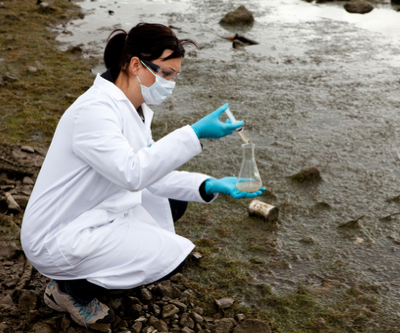Pollutants in water near fracking facility in line with EPA findings

New tests of water nearby natural-gas-drilling sites in Pavillion, Wyoming, shows toxins similar to the ones found last year that are linked to hydraulic fracturing —or fracking—, according to the U.S. Environmental Protection Agency (EPA).
The research was performed by the U.S. Geological Survey (USGS) and EPA plans additional testing before opening up the process for public comment, which may be bad news for Encana Corp. (NYSE, TSX:ECA), the natural-gas company that holds the leases on the land.
The firm, which has been at the centre of one of the fiercest debates over the risks of fracking, has consistently denied any link between its drilling and compounds found in the EPA’s two monitoring wells.
The issue to be resolved is whether the drilling impacted the drinking water or whether it was nature.
In late September, the company sent a letter to the EPA urging it to hand over test results from wells near the company’s drilling sites in Pavillion. According to Encana, its inability to access those results, along with data it is seeking under a Freedom of Information Act request, is preventing the company from weighing on the EPA investigation.
In the process of hydraulic fracturing, chemically treated water is forced underground to break rock, which lets gas flow.
EPA’s deadline for Encana and others to comment on its report originally expired Oct. 16, but it was extended Thursday for another three months.
Consistently inconsistent
According to researchers from Energy In Depth (EID), when the EPA first claimed its results were “generally consistent” with those released last month by the UGS, they reviewed the data themselves and found “it wasn’t consistent at all.”
Research Director Simon Lomax told MINING.com he thinks EPA extended the deadline until mid-January “to come up with some creative answers to the tough questions it will get when the draft Pavillion report finally goes into the peer-review process.”
The agency, says Lomax, will have to explain why the USGS obtained different results when it tested one of the EPA’s monitoring wells. Additionally, it will have to explain why USGS officials refused to test the other well.
The expert says EPA also needs to explain why it ignored warnings from the U.S. Bureau of Land Management, which —according to EID— said both monitoring wells were poorly built and any samples taken from them should not be trusted.
“Right now, the only agency that’s saying the EPA did a good job in Pavillion is the EPA,” concludes Lomax.
RELATED:
{{ commodity.name }}
{{ post.title }}
{{ post.date }}




Comments